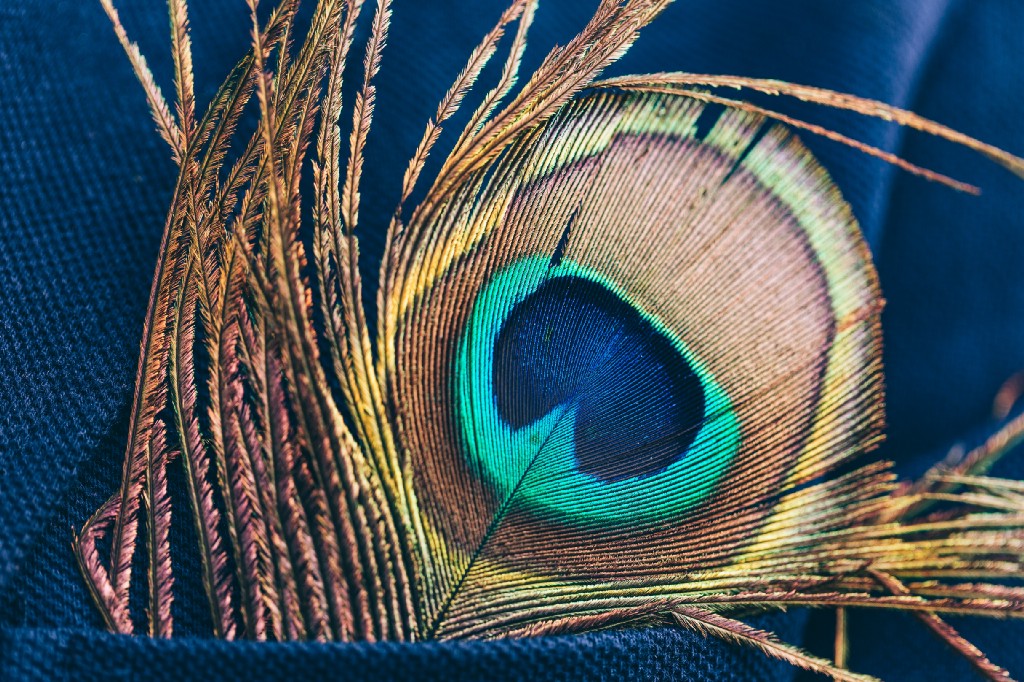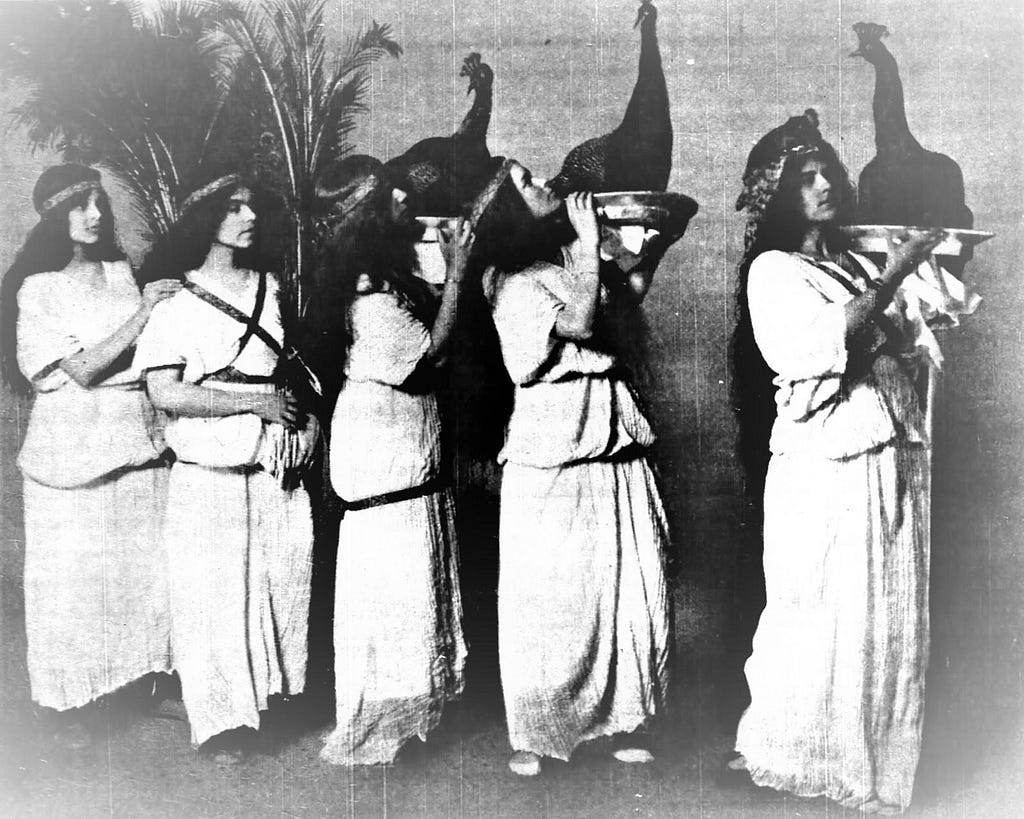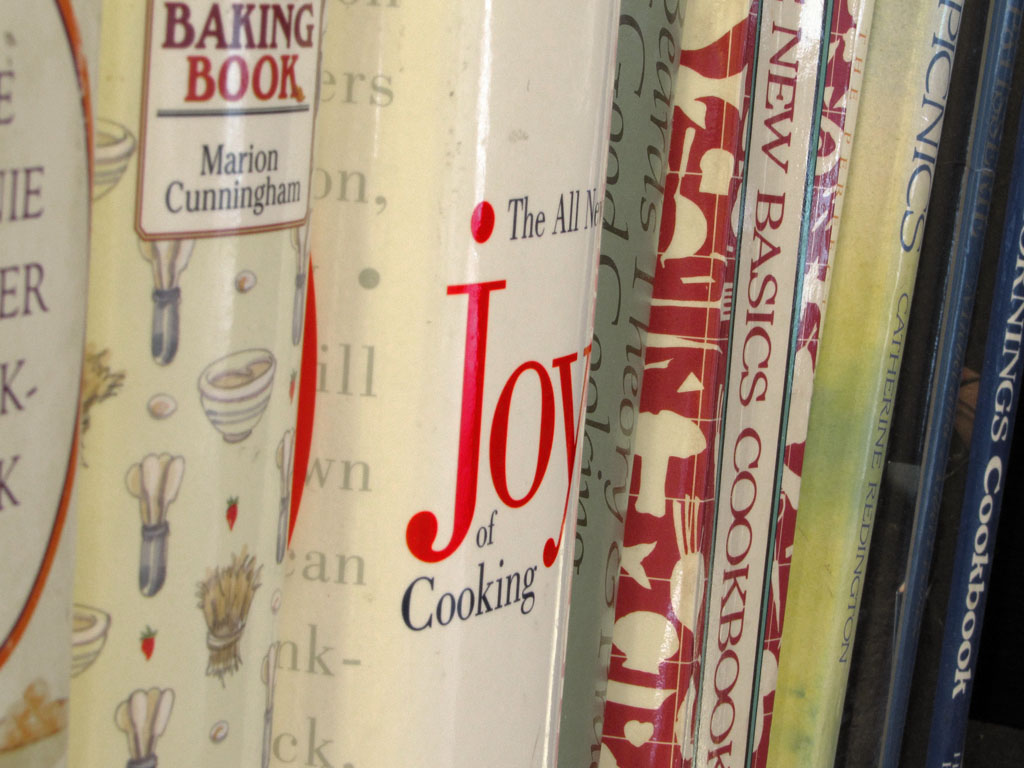interviews
Rebecca Makkai and Lisa Gornick Discuss Memory, Trauma, and Roasted Peacocks
Gornick’s new novel “The Peacock Feast” is a family saga with a cameo by Louis C. Tiffany

I first met Lisa Gornick in 2015, when we read together at Politics and Prose in Washington, D.C. Because I was in the middle of a book tour at the time, I’d only had a chance at the time to skim the opening pages of her novel-in-stories Louisa Meets Bear. But when I got home, ready to lie in bed for a few recuperative days and sink into something that (thank bejesus) was not my book, I discovered it was exactly what I needed: fun, trenchant, immersive.
I expected these qualities from her new novel, The Peacock Feast, and found them there — but on top of that I got historical and psychological mystery, art history, and several different lush settings (Louis C. Tiffany’s Oyster Bay, modern Manhattan, 1960s San Francisco). And once again, it was exactly the book I needed.
Rebecca Makkai: I was so grateful that this book came along for me just when it did because I’m grappling, in my novel-in-progress, with memory. Specifically, the lie that most fiction tells about memory, which is that people can recapture entire scenes with perfect clarity. A woman is slicing an apple in her kitchen, thinking about her past, and suddenly she’s there, and she can recall every line of dialogue, every fiber of everyone’s clothing. Which is ridiculous, of course. But I keep worrying that if I were to write memory the way it really is for us — fragments, detached moments, things repressed or conflated or misunderstood — the novel will be too frustrating to read.
You’ve found such elegant solutions to that here — and dissections, really, of what memory is. (Part of that is that you don’t rely only on memory for our jaunts into the past. The narrator has full access to events, and characters use newspapers and other aids. But part of it is that your characters, particularly Prudence, are honest about what they can and can’t remember.) I guess what I want to know is: How did you do it?
Lisa Gornick: You’ve begun with the spongy questions of how does memory work and what can a novel do! To approach the first, we’d have to weed through a lot of wonky research about short-term vs long-term memory and false memories and narrative reconstructions — none of which is consistent with those cheesy flashbacks you’re describing: woman in kitchen slicing apple, dissolve to 30 years earlier.
To circle around the second: Part of what I find so gratifying but also challenging about writing fiction is the possibility for infinite innovation. With each book, we hopefully bring what we’ve learned from the last, and can then attempt something new — as you so clearly did with the leap in scale and literary approaches between the marvelous Music for Wartime and the very different but also marvelous The Great Believers. With my prior book, Louisa Meets Bear, I’d experimented with how one story can reverberate with another so that, like memory, what we learn later both fleshes out and alters an earlier understanding.
What I find so gratifying but also challenging about writing fiction is the possibility for infinite innovation.
RM: That was one of my favorite things, actually, about Louisa Meets Bear: the way it wasn’t quite a novel-in-stories, and it wasn’t quite a novel, and it wasn’t quite a story collection. The closest analogue I can think of is Jennifer Egan’s A Visit from the Goon Squad, the way each chapter moves sort of laterally into the next. You’re doing similar lateral moves in this novel, I think — giving us so many different perspectives and so many different time periods. Did it feel similar to Louisa, as you wrote?
LG: You’ve bored into my process: the lateral moves both within and between books. I really didn’t understand how Louisa Meets Bear worked until after I finished it — how, as Bruce Springsteen says, one plus one can equal three — but once I had a sense, I tried to carry that echo chamber of different stories and points of view into the new novel. With The Peacock Feast, though, I was dealing with a larger tableau — the residues of memory and fantasy and trauma across four generations of a family — and needed a sturdier structure. The image I had in mind was a braid, with three storylines that ultimately plait to form a single narrative.
Returning to your question about how I handled memory, each storyline employs a different strategy. The first, which serves as the frame, is a week-long encounter between a 101 year-old woman, Prudence, and her 43 year-old hospice nurse great-niece, who Prudence has not known even existed. Prudence is remarkably cognitively intact but, like all of us, her early childhood memories are recalled in fragments — in part, because it would be overwhelming to remember everything (though there are rare persons who do, moment by moment); in part, because very young children operate in a register where imagination and reality are blurred; and, in part, because we sometimes repress our most painful experiences. Grace has brought a box of her grandfather’s mementoes: newspaper clippings, beach stones, photographs, a packet of letters, the top of a peacock feather. Looking through these ancient items seems to Prudence, she tells Grace, like shaking a dandelion such that bits of her youth are now floating between them. Grace’s situation is entirely different: she too vividly recalls a terrible time in her life, and struggles with whether she will share her memories with Prudence — struggles both because she’s never fully shared them with anyone, and because she fears they may cause Prudence pain. As so often happens, the exchange of memories between the two women becomes a currency of intimacy and ultimately cements their bond.
The other two storylines are Prudence’s and Grace’s individually. Prudence’s starts with her earliest memory of an event she only later realizes was Louis C. Tiffany’s Peacock Feast, and then traverses the century until she meets Grace. By relating this storyline in close third-person through the younger Prudence’s point of view, I was able to depict scenes from Prudence’s past that at 101 she remembers only vaguely or not at all. Because there’s a mystery of sorts at the core of the book, I had to be judicious about what to include — laying the seeds for what is later revealed so that it hopefully feels as inevitable and credible to the reader as it does to Prudence, but not allowing the reader to have the reveal before Prudence.
The exchange of memories between the two women becomes a currency of intimacy and ultimately cements their bond.
RM: This was something else I loved: the way you could withhold information without it feeling like you were. I was only very subtly aware of it (and only then, the way a magician at another magician’s magic show is always looking for the strings) and I never felt manipulated.
I did see Prudence and Grace as the bookends of the story — not only because they’re the oldest and youngest living members of this family whom we meet, but because they’re our investigators, the ones standing in for us and our curiosity.
LG: What an apt analogy: most writers I know do read other writers’ work with a double consciousness — for pleasure, but also with an eye for how they’ve pulled off their feats. As for Prudence and Grace as readers’ stand-in investigators, you’re absolutely right, though their investigations and revelations are constrained by their empathy for each other — each aware that both their stories and their inquiries could cause suffering for the other.
With Grace, I was guided by the aphorism that our personal histories commence with our grandparents’ memories as well as by the awareness that Grace’s storyline would need to fill in what Prudence doesn’t know about Randall (Prudence’s brother and Grace’s grandfather) — which is essentially everything after he left New York at 14, stowing away on a train headed west. Here, as you’ve observed, the reader and Prudence are in the same shoes: to understand Grace and how she came to be born on a commune in northern California and why she was raised by her grandfather, Grace’s storyline has to start with Randall on that train and recount both his tale and his son’s. Many of those stories would not be known in any detail, if at all, by Grace and therefore had to be told through other points of view — though I did pass the baton back to Grace once the narrative caught up to her being part of it and of an age to sufficiently understand what was going on around her.
RM: You’re a psychoanalyst as well as a writer, and it seems clear, both in your writing and in your answers here, that you think about your characters through that lens. Is this conscious, or (oh God, sorry, no psychoanalysis puns intended) subconscious? In other words: As you write, are you thinking about these characters as an analyst would, or are you thinking more as your characters, going on instinct about the way they’d see themselves?
LG: My thinking as an analyst comes into play during the early stages of note-taking, while I’m fleshing out my characters. Then, I want to know about my characters in the same ways when I was in practice I wanted to know about my patients: early memories, fantasies, relationships. By the time I begin what I think of as the actual writing, all of that information recedes into the background and I let my unconscious (which we know from dreams is endlessly inventive and mischievous) play a role in guiding what characters then do on the page.
RM: And of course one of your characters, Dorothy, is a psychoanalyst. This is Louis Comfort Tiffany’s daughter, a real woman who worked with Anna Freud. I kind of hate asking origin stories (if only because I hate being asked about origins, when the origins of a novel are always so many and so obscure), but did your knowledge of the history of psychoanalysis lead you to Dorothy and then to this family, or did you discover her along the way?
LG: The origin story of a novel: such a lovely idea! Here’s a version: The Peacock Feast began on a snowy February day in 2007 — a long time ago — at The Metropolitan Museum of Art when I wandered into what turned out to be a magnificently curated exhibit about Tiffany’s fantastical Long Island estate, Laurelton Hall. There were room after room of extraordinarily beautiful objects — Tiffany’s own paintings, the stained glass windows he’d installed in his mansion, his vases and exotic collections of artifacts — but it was a photograph, published in 1914 in The New York Times and titled “Roman Luxuries at Tiffany Feast for Men of Genius,” that stopped me in my tracks.

Who were these girls with these horrifying roasted peacocks hoisted atop their shoulders? How did they feel parading in gauzy costumes in front of the 150 “men of genius” Tiffany had invited to his extravagant and bizarre event? When I later discovered that the center girl in the photograph was Tiffany’s youngest daughter — who I recognized from her married name, Dorothy Burlingham, as Anna Freud’s partner and an important figure in the history of psychoanalysis — I knew this was my novel to write.
Who were these girls with these horrifying roasted peacocks hoisted atop their shoulders?
RM: Some real historical figures, namely Tiffany, don’t always come off terribly well in this book. (Others, like Dorothy, come off much better — but you’re still manufacturing details about their lives.) Did you have qualms about representing real people on the page? Did you feel that there were limits to what you could invent?
LG: As I say in the acknowledgments, my rule of thumb for characters who once lived and occasions that actually took place was to hew as closely as possible to the historical record. My depictions of Tiffany’s wide-ranging career (from painter to decorator of the Presidential Palace in Havana to inventor of new glass techniques), his phantasmagorical Laurelton Hall, the performance art Peacock Feast, and his behavior as a parent derive from the rich body of material on his life and work that I extensively studied — and I think accurately portray the scale of his genius and the complexity of his personal relationships. Surprising as it may seem, Tiffany appears in the novel in only one scene when, without saying a word, he peers briefly into a room where Prudence’s father is working. Most of what is recounted about him is through the stories of invented characters or through imagined conversations between historical and fictional persons in the fictive world of the novel. As for the potentially incendiary part of the novel, the implied accusation of Tiffany by Prudence’s mother, it’s left to the reader’s interpretation if what Prudence’s mother hinted really happened or is a laudanum-induced fantasy: a transformation of the powerlessness she felt as the employee of a very wealthy man into a concrete trauma.
RM: That’s indeed what I was referring to, but wow, wait a minute — it really hadn’t occurred to me that we just glimpsed him that once! He looms so large here, and of course maybe that’s precisely because we never get up close to him. Were you tempted to put more of him on the page?
LG: No. The novel is really not about Tiffany: it’s about the legacy of feeling dehumanized that spans four generations. Of feeling, as Prudence believes her immigrant servant parents had with their wealthy employer, moved around like pieces of furniture. As the poignant account of the undocumented Guatemalan housekeeper who worked at Trump’s New Jersey estate demonstrates, it’s a story that’s very much alive today.
RM: I love what a well-populated novel this is, and I don’t just mean in terms of the number of characters. It feels like there’s a narrative commitment to following all the characters, and this means we get a look at the lives of immigrant servants as well as the working class and the well-off and the extremely wealthy. I wonder if you could have written such a class-conscious book if you didn’t have such a broad cast, or if novels that deeply explore class must, by definition, be ensemble pieces. Did following those lives feel like character-led diversions, or did it feel like you were assembling these stories for a greater narrative purpose?
LG: I love what a well-populated novel The Great Believers is! And, the same could be said about the narrative commitment you made to the worlds you bring to life: the gay community of Chicago in the 80s during the AIDS siege, and the community of survivors for whom those losses remain alive thirty years later and across a sea. It’s interesting to me that we both turned from stories to multi-generational sagas. I am a great admirer of the spare prose and clean narratives of Rachel Cusk’s Outline trilogy and Sigrid Nunez’s The Friend, books with constrained casts of characters and tight time frames. But I also love books, like Alice McDermott’s novels and Jennifer Egan’s Manhattan Beach, that tackle wider swathes of society and history — and, as their many admirers demonstrate, I’m clearly not alone.
As for “narrative purpose,” I’m only now beginning to see how I might define that more clearly from the outset (a goal, in fact, for the novel-in-progress) rather than discovering it post facto.
RM: If the you who started this book could have read the finished product, what do you think would have surprised you the most?
LG: Certainly the gorgeous cover that reflects so many of the novel’s motifs. I’d always imagined using one of the black and white photographs from the actual Peacock Feast, but my whip-smart editor, Sarah Crichton, nixed that idea: it would telegraph “historical fiction,” which she pointed out would be misleading since a third of the book is set in 2013 and, of the rest, a good portion takes place from the ’60s forward. I imagine that you faced the same question about whether The Great Believers, which toggles between 1980s Chicago and Paris in 2015, should be viewed as “historical.”
I would have been surprised, too, by some of the recurring themes: art vs. decoration, the bond between brother and sister, what makes a home, what constitutes a good death. Most of all, though, I would have been surprised by how damned hard this book was to write, how many characters and scenes were left on the cutting room floor, and the number of drafts it took to complete.
Lisa Gornick is the author of Louisa Meets Bear, Tinderbox, and A Private Sorcery. Her stories and essays have appeared widely, including in The New York Times, Prairie Schooner, Real Simple, Salon, Slate, and The Sun. She holds a BA from Princeton and a Ph.D. in clinical psychology from Yale, and is on the faculty of the Columbia University Center for Psychoanalytic Training and Research. A long-time New Yorker, she lives in Manhattan with her family.









